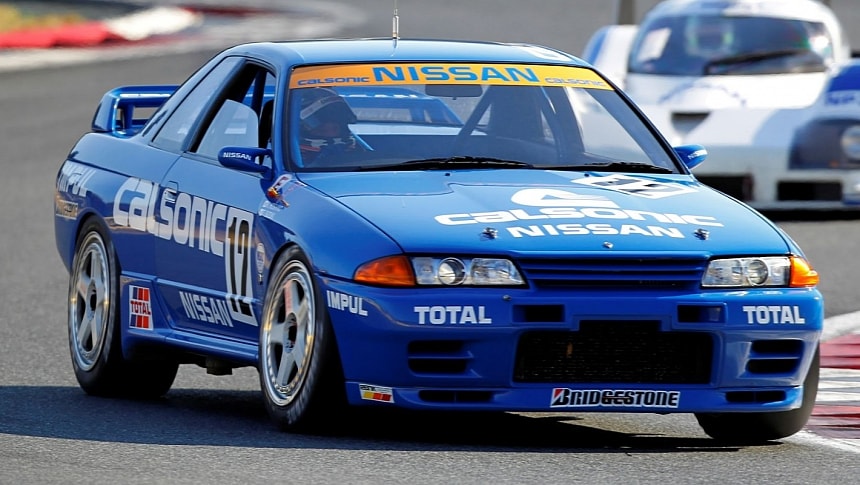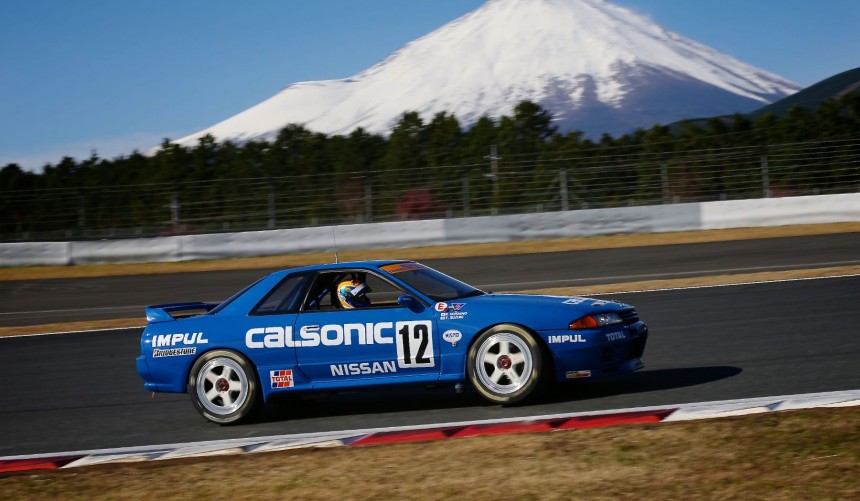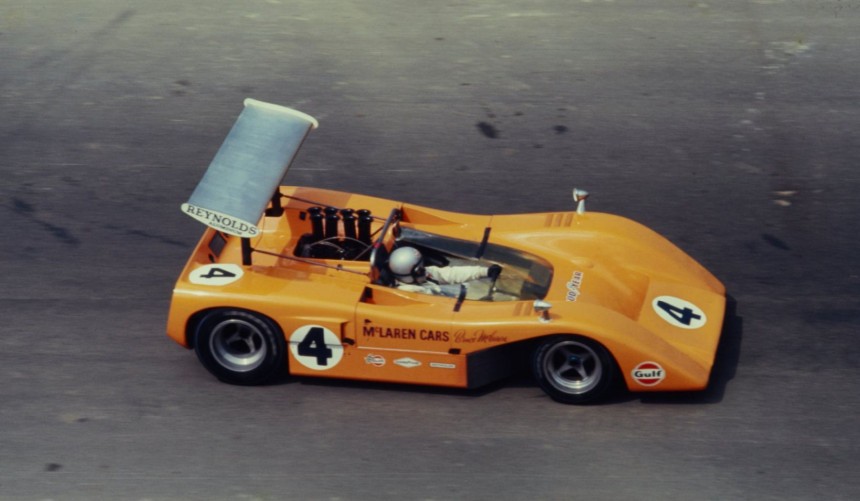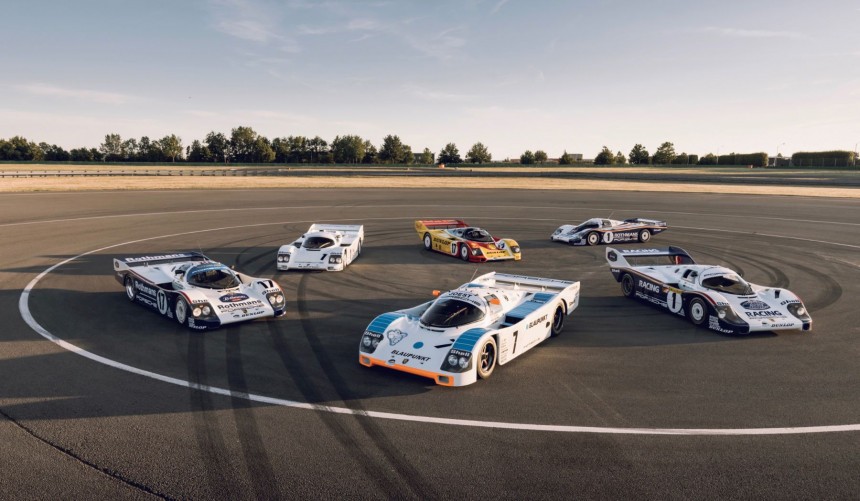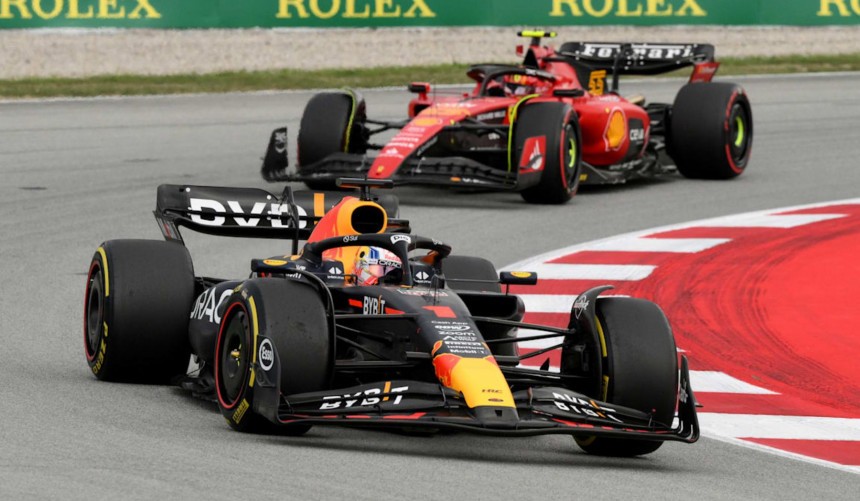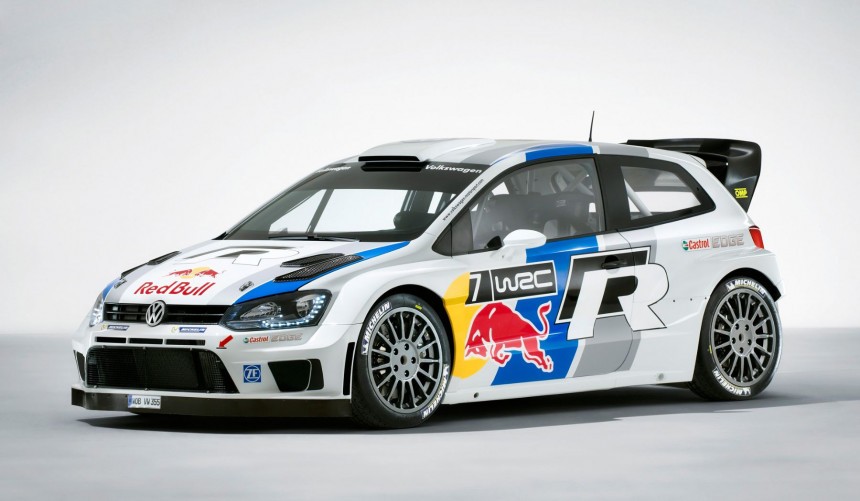For more than a century, motorsport has given us a long list of legendary race cars, of which some managed to dominate the competition in record-breaking fashion.
Shortly after building the first self-powered carriages, people started racing and improving them.
Although those late-1800s vehicles were extremely slow and, consequently, the events were incredibly boring, only about half a century later, motorsport became one of the world's most exciting forms of entertainment.
From the 1950s onwards, race car development improved at an ever-growing pace, leading to the most iconic race-bred vehicles ever created.
Some of these machines ended up in the history books for dominating the competition, and in this article, we're going to remember five of the most dominant race cars in the history of motorsport.
In 1989, after a sixteen-year hiatus, Nissan brought back the high-performance GT-R version to the Skyline range.
Powered by the twin-turbo RB26DETT inline-six and featuring the innovative ATTESA all-wheel-drive system, the R32 GT-R became an instant sports car icon and to this day, it's one of the most famous Japanese production cars of all time.
While it is mostly known for its nearly limitless tuning potential, the R32 is also one of the most dominant race cars ever created.
In 1990, the model made its debut in the Japanese Touring Car Championship (JTCC), where it replaced the championship-winning R31 Skyline, and by the end of the season, it had won every single race.
It repeated the astonishing feat in 1991, 1992, and 1993. In total, the legendary race car won 29 consecutive JTCC races (every single one it entered), effectively killing off the Group A.
In addition, it also won the 24 Hours of Spa endurance race in 1991, the Bathurst 1,000 in 1991 and 1992, as well as the Australian Touring Car Championship in 1991 and 1992, earning the nickname "Godzilla" in the process.
Long before it dominated Formula 1 with the one-and-only Ayrton Senna behind the wheel, the company founded by the legendary Bruce McLaren was heavily involved in the Canadian-American Challenge Cup, or Can-Am, for short.
For the 1968 season, Bruce McLaren helped develop and drive a new race car based on the successful M6.
Powered by a race-bred Chevy V8 initially capable of delivering over 600 hp, the new car dubbed M8 got off to a promising start, winning several races in 1968.
However, in 1969, the revised machine driven by McLaren and teammate Denny Hulme won every single race.
Sadly, Bruce McLaren died in 1970 during a test run of an updated M8 version. Despite this, the team honored the legendary driver's memory by winning all but one race during the 1970 season.
Finally, in 1971, the last iteration of the M8 (called M8F) brought home the third consecutive Can-Am championship after winning all but two of the season's events.
After developing the legendary 917 prototype during the late 1960s and winning its first two Le Mans titles at the 1970 and 1971 races, Porsche shifted its efforts to the Can-Am championship, where it aimed to end McLaren's reign of dominance.
After succeeding over the pond, the Germans came back to Le Mans, where they won four out of five editions of the famous endurance race from 1976 to 1980.
Aiming to solidify its place atop the endurance racing ranks, Porsche began developing a new Group C prototype in 1981.
Codenamed 956, the turbocharged flat-six-powered machine designed by the legendary Norbert Singer went on to win the next four editions of Le Mans.
For the 1986 race, it was replaced by an evolved version named 962. Though extensively improved, the 962 was closely related to the 956, and it continued Porsche's dominance at Le Mans by bringing home two more wins in 1986 and 1967.
In addition, the 956/962 won five Drivers' Championships and three World Endurance Championships from 1982 to 1987.
Then, in 1994, Porsche teamed up with Dauer and won the legendary race once again with a 956 chassis by exploiting a loophole in the new GT1 class rulebook.
After dominating Formula 1 for four straight seasons (2010-2013), Red Bull had to match Mercedes lift trophies for the next seven years.
Nevertheless, the UK-based Austrian racing team didn't give up and in 2021, it started a new streak of dominance that culminated with the RB19.
Red Bull's challenger for the 2023 season, the Honda-powered open-wheeler designed by a talented team of engineers led by Adrian Newey, started the season with 14 consecutive wins and ended it in the history books.
Driven by Max Verstappen and Sergio Pérez, the RB19 won 16 out of 17 races, achieved 12 poles, 10 fastest laps, and 24 podiums during the 2023 season.
Thanks to those figures, it became the most dominant Formula 1 car of all time, surpassing the legendary McLaren MP4/4 driven in 1988 by Ayrton Senna and Alain Prost.
In 2013, Volkswagen rejoined the World Rally Championship (WRC), after failing to leave a mark during the late-1970s and 1980s.
For this new factory program, VW placed all bets on an all-new machine loosely based on the production Mk 5 Polo subcompact hatchback.
Designed by Heinz-Jakob Neußer, the car dubbed Polo R WRC was powered by a bespoke, turbocharged 1.6-liter inline-four restricted to around 320 hp.
Few thought that the VW stood a chance against Citroen, who had dominated the competition for nearly a decade.
However, the new Polo R, driven by Sébastien Ogier, surprised everyone by proving virtually unbeatable right from the start.
During a career that spanned over four seasons, the Polo won 43 of the 53 rallies it competed in and scored 37 additional podiums. Moreover, it racked up four consecutive Drivers' Championship trophies for Ogier and four Manufacturers' Championships for the German manufacturer, becoming the most dominant car in WRC history.
Although those late-1800s vehicles were extremely slow and, consequently, the events were incredibly boring, only about half a century later, motorsport became one of the world's most exciting forms of entertainment.
From the 1950s onwards, race car development improved at an ever-growing pace, leading to the most iconic race-bred vehicles ever created.
Some of these machines ended up in the history books for dominating the competition, and in this article, we're going to remember five of the most dominant race cars in the history of motorsport.
Nissan Skyline GT-R R32
Powered by the twin-turbo RB26DETT inline-six and featuring the innovative ATTESA all-wheel-drive system, the R32 GT-R became an instant sports car icon and to this day, it's one of the most famous Japanese production cars of all time.
While it is mostly known for its nearly limitless tuning potential, the R32 is also one of the most dominant race cars ever created.
In 1990, the model made its debut in the Japanese Touring Car Championship (JTCC), where it replaced the championship-winning R31 Skyline, and by the end of the season, it had won every single race.
It repeated the astonishing feat in 1991, 1992, and 1993. In total, the legendary race car won 29 consecutive JTCC races (every single one it entered), effectively killing off the Group A.
In addition, it also won the 24 Hours of Spa endurance race in 1991, the Bathurst 1,000 in 1991 and 1992, as well as the Australian Touring Car Championship in 1991 and 1992, earning the nickname "Godzilla" in the process.
McLaren M8
For the 1968 season, Bruce McLaren helped develop and drive a new race car based on the successful M6.
Powered by a race-bred Chevy V8 initially capable of delivering over 600 hp, the new car dubbed M8 got off to a promising start, winning several races in 1968.
However, in 1969, the revised machine driven by McLaren and teammate Denny Hulme won every single race.
Sadly, Bruce McLaren died in 1970 during a test run of an updated M8 version. Despite this, the team honored the legendary driver's memory by winning all but one race during the 1970 season.
Finally, in 1971, the last iteration of the M8 (called M8F) brought home the third consecutive Can-Am championship after winning all but two of the season's events.
Porsche 956/962
After succeeding over the pond, the Germans came back to Le Mans, where they won four out of five editions of the famous endurance race from 1976 to 1980.
Aiming to solidify its place atop the endurance racing ranks, Porsche began developing a new Group C prototype in 1981.
Codenamed 956, the turbocharged flat-six-powered machine designed by the legendary Norbert Singer went on to win the next four editions of Le Mans.
For the 1986 race, it was replaced by an evolved version named 962. Though extensively improved, the 962 was closely related to the 956, and it continued Porsche's dominance at Le Mans by bringing home two more wins in 1986 and 1967.
In addition, the 956/962 won five Drivers' Championships and three World Endurance Championships from 1982 to 1987.
Then, in 1994, Porsche teamed up with Dauer and won the legendary race once again with a 956 chassis by exploiting a loophole in the new GT1 class rulebook.
Red Bull Racing RB19
Nevertheless, the UK-based Austrian racing team didn't give up and in 2021, it started a new streak of dominance that culminated with the RB19.
Red Bull's challenger for the 2023 season, the Honda-powered open-wheeler designed by a talented team of engineers led by Adrian Newey, started the season with 14 consecutive wins and ended it in the history books.
Driven by Max Verstappen and Sergio Pérez, the RB19 won 16 out of 17 races, achieved 12 poles, 10 fastest laps, and 24 podiums during the 2023 season.
Thanks to those figures, it became the most dominant Formula 1 car of all time, surpassing the legendary McLaren MP4/4 driven in 1988 by Ayrton Senna and Alain Prost.
VW Polo R WRC
For this new factory program, VW placed all bets on an all-new machine loosely based on the production Mk 5 Polo subcompact hatchback.
Designed by Heinz-Jakob Neußer, the car dubbed Polo R WRC was powered by a bespoke, turbocharged 1.6-liter inline-four restricted to around 320 hp.
Few thought that the VW stood a chance against Citroen, who had dominated the competition for nearly a decade.
However, the new Polo R, driven by Sébastien Ogier, surprised everyone by proving virtually unbeatable right from the start.
During a career that spanned over four seasons, the Polo won 43 of the 53 rallies it competed in and scored 37 additional podiums. Moreover, it racked up four consecutive Drivers' Championship trophies for Ogier and four Manufacturers' Championships for the German manufacturer, becoming the most dominant car in WRC history.
